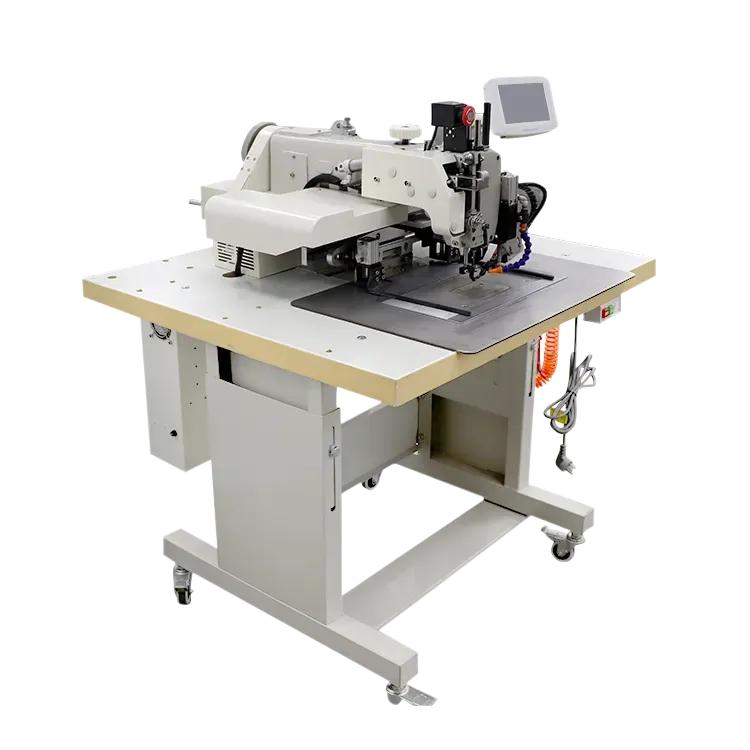pp woven bag cutting sewing printing line machine
The Evolution of PP Woven Bag Cutting, Sewing, and Printing Line Machines
In today’s fast-paced world, the packaging industry is undergoing significant transformations due to advancements in technology and changing consumer demands. One of the standout innovations in this sector is the PP (polypropylene) woven bag cutting, sewing, and printing line machine. This automated system has revolutionized the manufacturing process of woven bags, making it more efficient, cost-effective, and environmentally friendly.
Understanding PP Woven Bags
PP woven bags are made from polypropylene, a versatile plastic polymer. These bags are known for their strength, durability, and resistance to moisture, making them ideal for various applications, including agricultural, construction, and retail packaging. The lightweight nature of polypropylene also adds to its appeal, as it reduces transportation costs and aids in lowering the carbon footprint associated with bag production.
The Role of Cutting, Sewing, and Printing Machines
The cutting, sewing, and printing line machine specifically designed for PP woven bags optimizes each step of the manufacturing process.
1. Cutting The initial stage involves cutting large rolls of PP fabric into specific shapes and sizes required for the bags. Advanced cutting machines employ laser or rotary cutting techniques to ensure precision and consistency. This automation minimizes waste as excess material can be efficiently reused or recycled, contributing to a more sustainable production process.
2. Sewing Once cut, the individual bag pieces are prepared for sewing. Traditional methods of sewing can be labor-intensive and time-consuming, increasing production costs and lead times. However, modern sewing machines designed for PP woven bags operate at high speeds and can handle multiple stitches, significantly enhancing productivity. These machines often have programmable settings, allowing manufacturers to adjust stitching patterns and lengths according to the specific requirements of the bags being produced.
3. Printing Lastly, the printing aspect of the machine line offers an opportunity for branding and aesthetic appeal. Advanced printing technologies such as flexographic printing allow for high-resolution images and vibrant colors to be applied directly onto the woven bags. This not only enhances the visual appeal of the bags but also serves as a vital marketing tool for businesses. Automated printing processes reduce production mistakes and enable a quicker turnaround time for custom designs.
pp woven bag cutting sewing printing line machine

The Advantages of Automated Production Lines
The implementation of an integrated cutting, sewing, and printing machine offers numerous advantages to manufacturers
- Increased Efficiency Automation streamlines the production process, reducing manual labor and the time needed for each stage of production.
- Cost Savings By decreasing labor costs and waste through precision cutting and sewing, manufacturers can significantly cut down on overall production expenses.
- Quality Consistency Automated machines deliver uniform quality, ensuring that every bag produced meets the same high standards.
- Enhanced Flexibility With programmable systems, manufacturers can quickly switch between different bag styles and sizes, accommodating a wider range of customer demands.
- Environmental Impact The reduction in waste, alongside the ability to produce reusable and recyclable bags, aligns with growing global emphasis on sustainability.
Conclusion
The cutting, sewing, and printing line machines for PP woven bags mark a significant leap in the manufacturing of packaging solutions. As industries become increasingly aware of the importance of sustainability and efficiency, the demand for such technologically advanced equipment continues to rise. By embracing these innovations, manufacturers can not only meet the growing needs of consumers but also contribute positively to the environment, making PP woven bags a smart choice for the future of packaging. As technology evolves, we can expect even more enhancements in production capabilities, further solidifying the role of automated systems in the packaging industry.
-
Leather Sewing Machine: The Industrial Standard for Tough MaterialsNewsJul.18,2025
-
Sail Making Machine: Heavy-Duty Stitching for Industrial and Marine NeedsNewsJul.18,2025
-
Sling Sewing Machine: The Backbone of Heavy-Duty FabricationNewsJul.18,2025
-
Leather Sewing Machine: Precision for Heavy-Duty StitchingNewsJul.18,2025
-
Big Bag Sewing Machine: Powering the Future of Bulk PackagingNewsJul.18,2025
-
FIBC Sewing Machine: Essential Equipment for Bulk Bag ProductionNewsJul.18,2025
-
Heavy Duty Leather Sewing Machine: A Must-Have for Professional LeatherworkNewsMay.28,2025





























